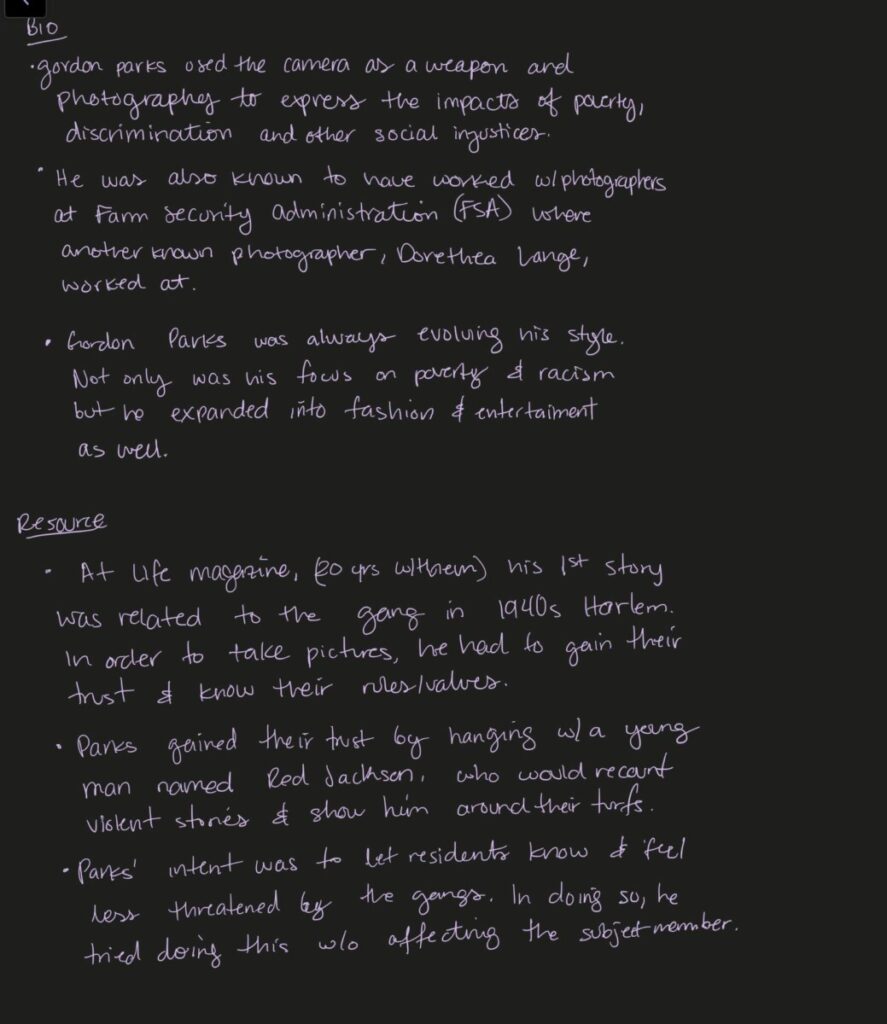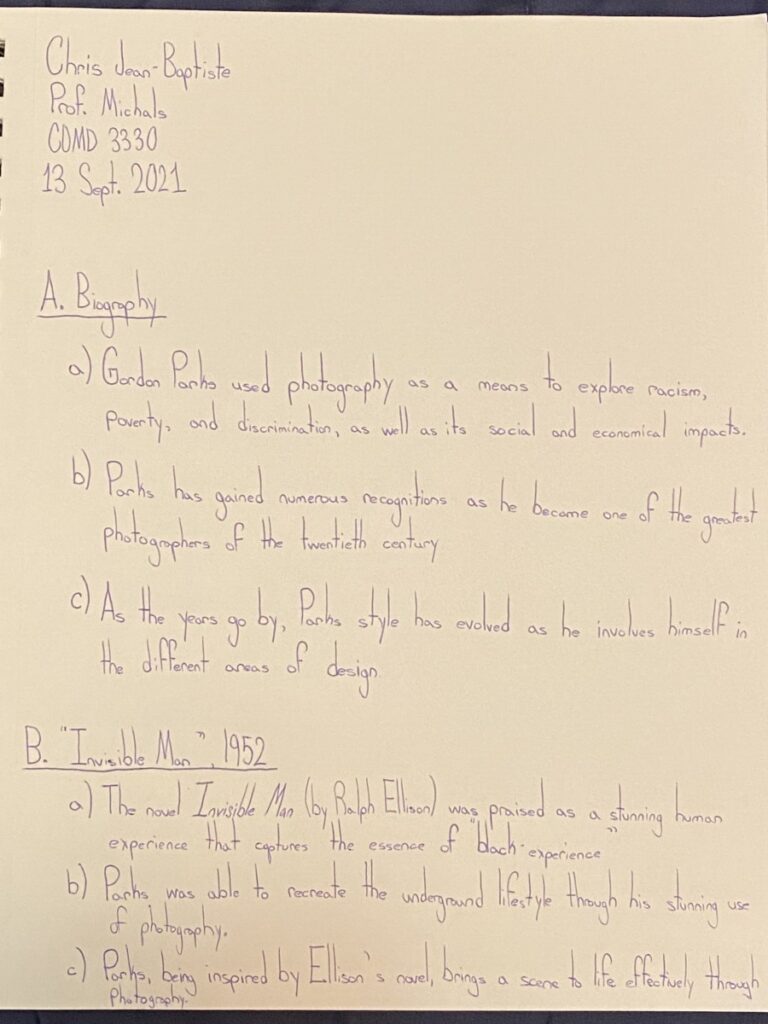The photograph is titled Red Jackson and it was taken in 1948. The subject matter in this photograph is of a young man called Red Jackson. The subject is staring out a window against the bright sunlight falling down his face. This brings out a sharp contrast between light and dark. The sunlight is very harsh and it makes the color almost white against his face and shoulder. The background is mostly black lacking detail. Another composition that fits is Figure to Ground. Because of its contrast and the amount of space that the subject takes within the frame against the background of the window, it creates a positive/negative space.
The subject, Red Jackson, was the leader of one of the Harlem gangs called Midtowners. Gordon Parks’ intent with the photographs was to reduce the feeling of threats/fears for residents of Harlem. He mentions that he also did want to affect the subject, by recounting their stories. His use of light and dark brings an almost anonymous feel to the subject. He could have gone straight to silhouette, but, we can see Red Jackson, looking out at the streets and pondering. The window line creates a separation from him and society. The broken window glass shows hints of violence and poverty.






Recent Comments